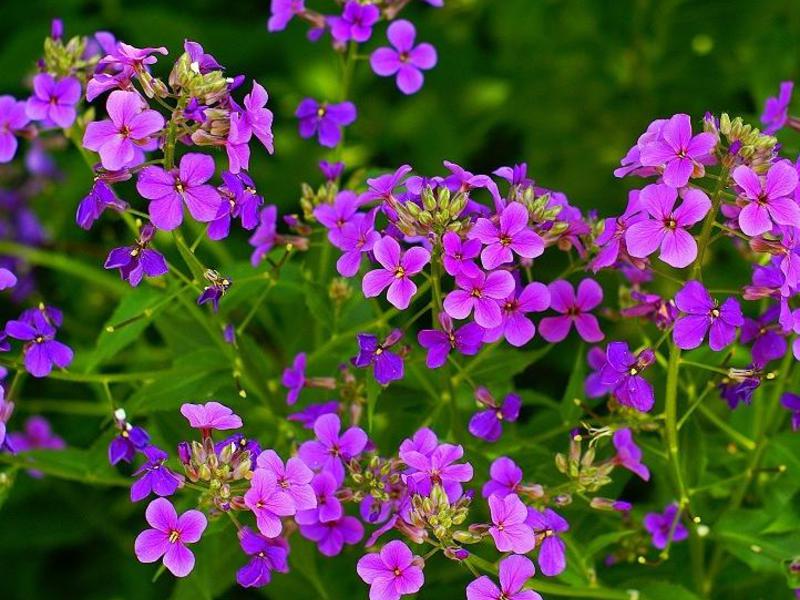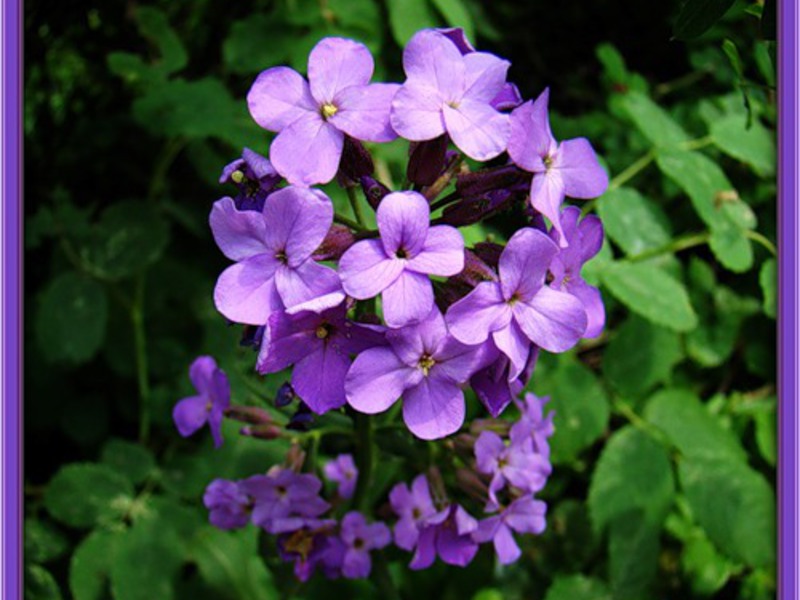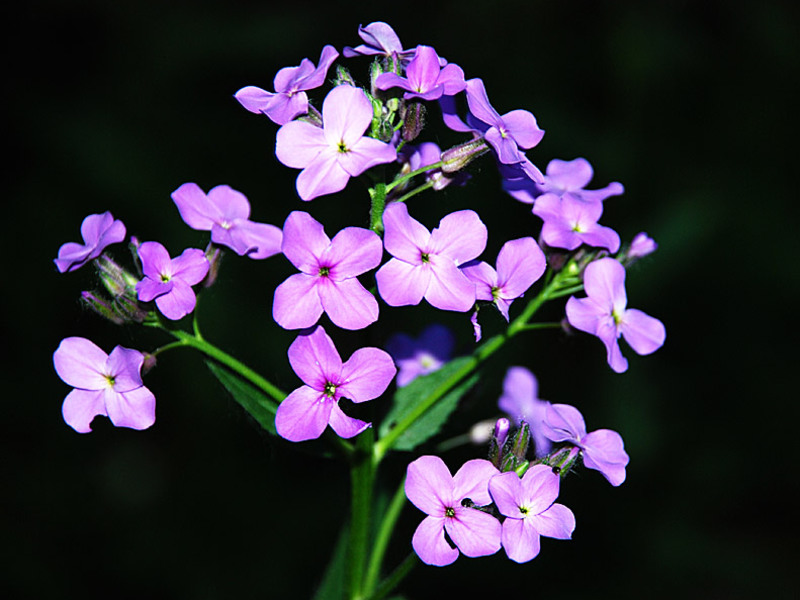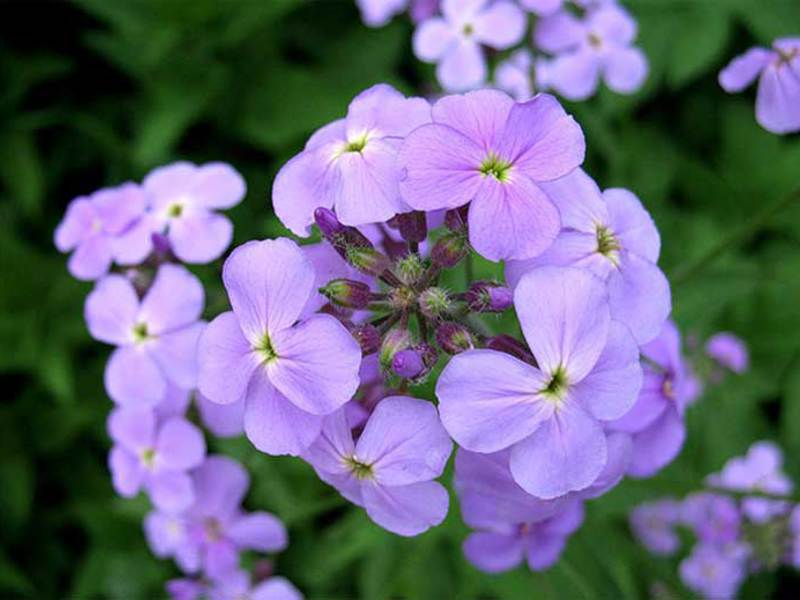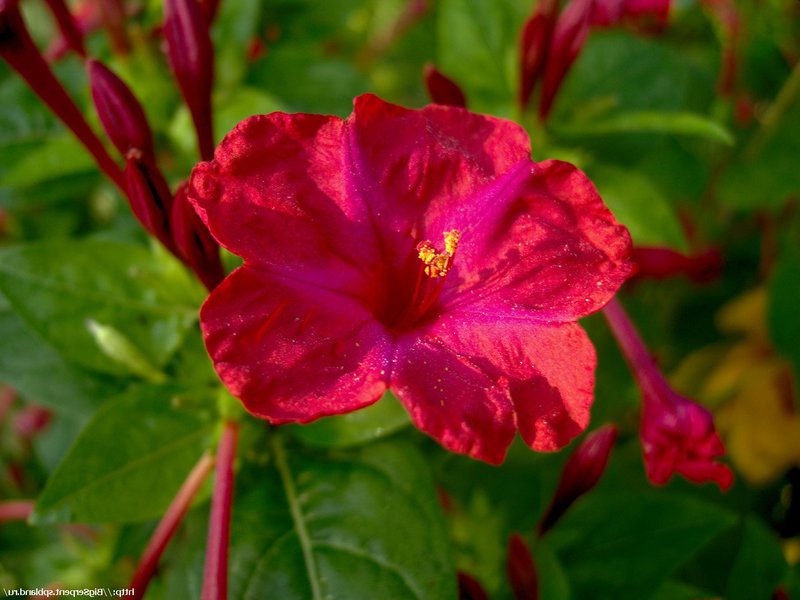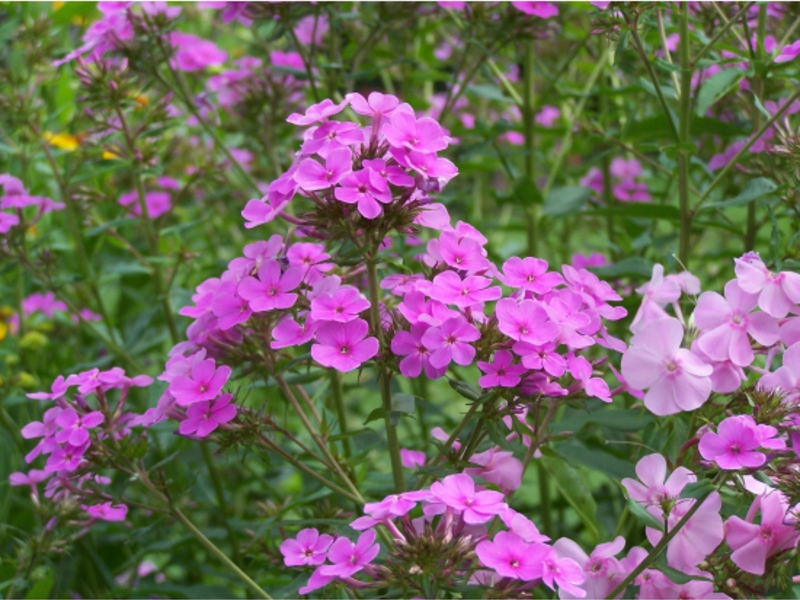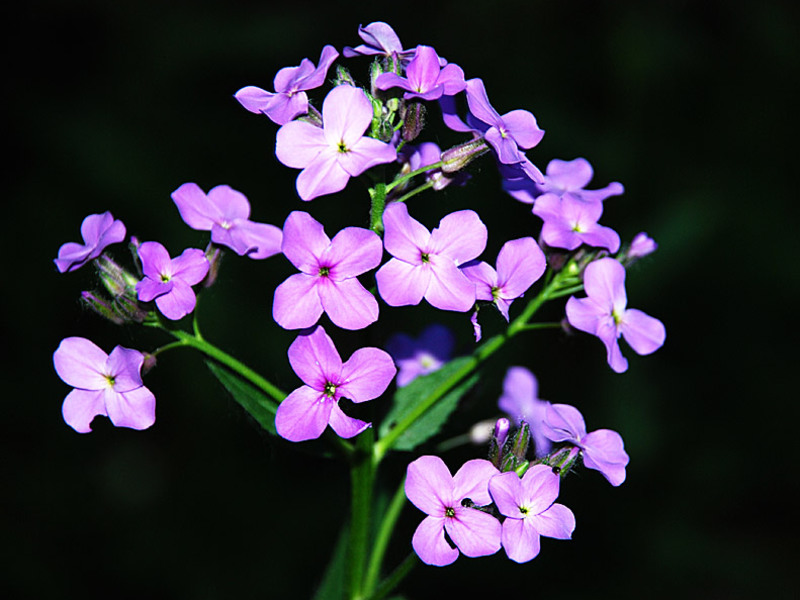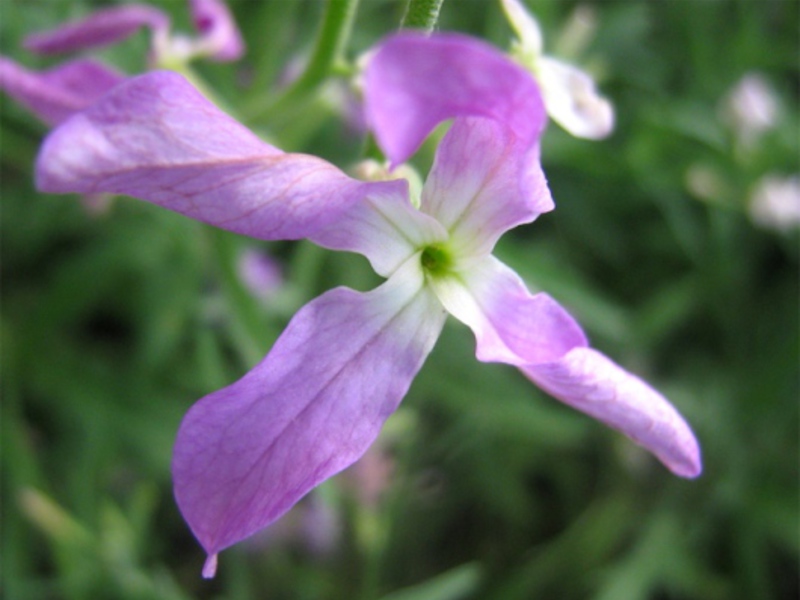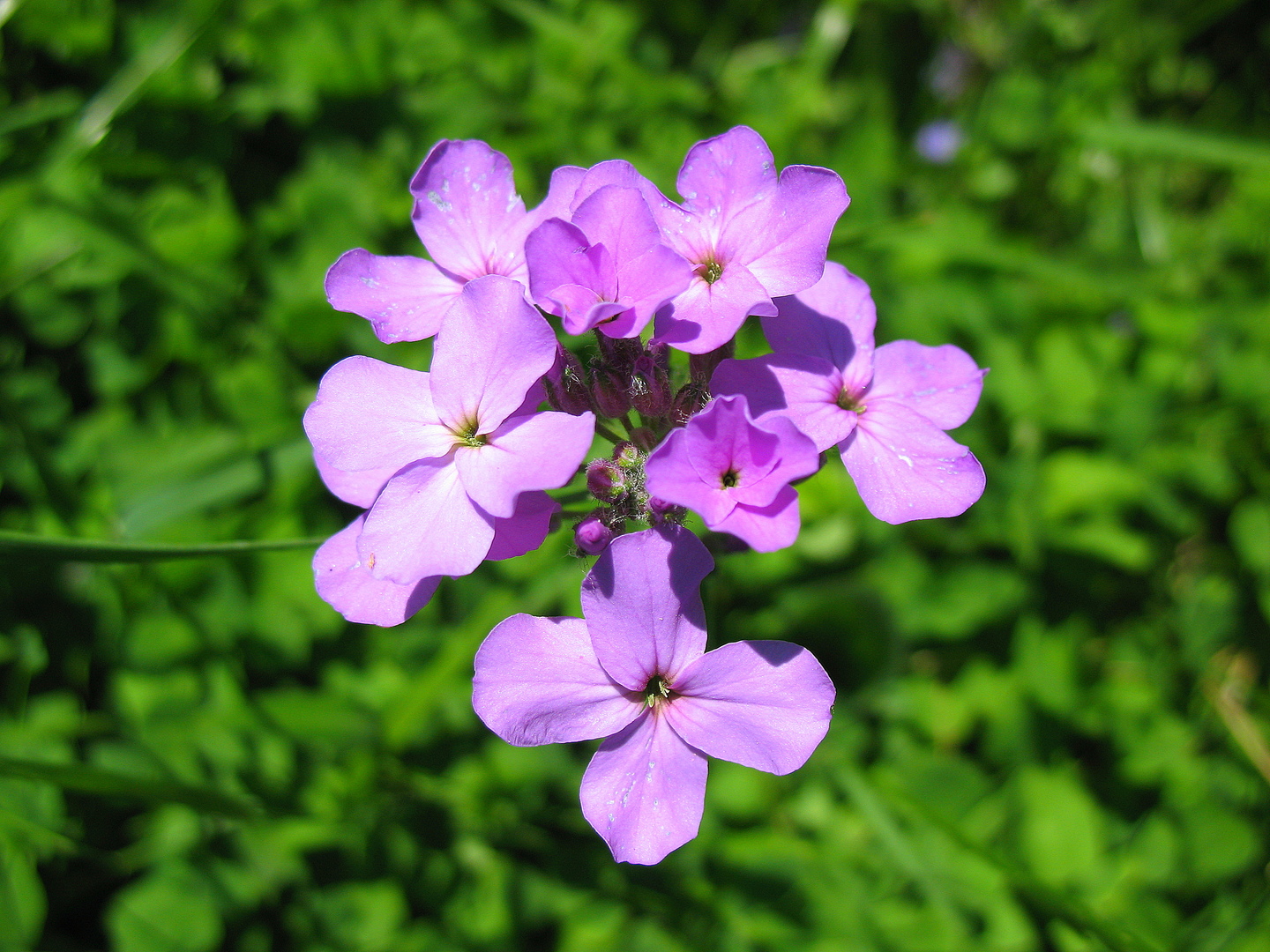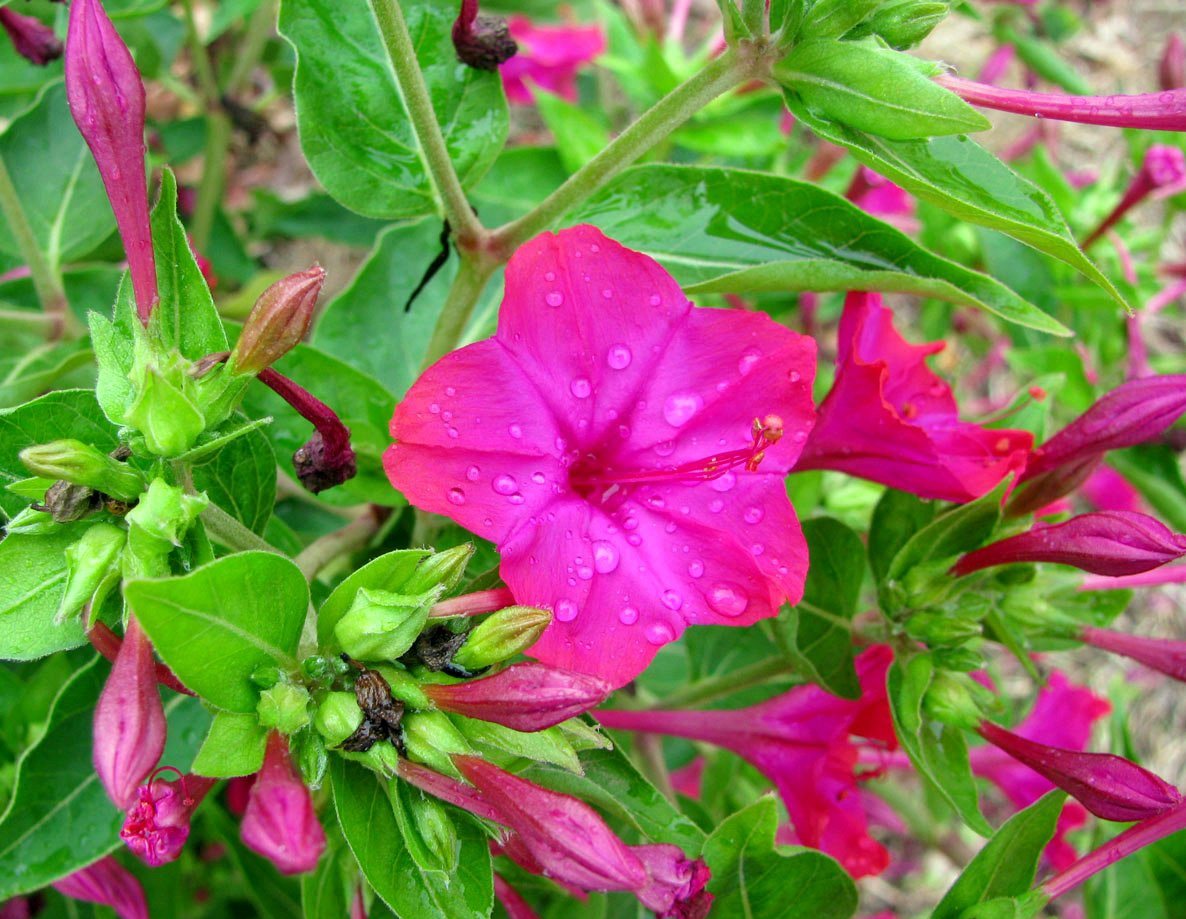Since ancient times, plants with a pleasant smell have been very popular among gardeners. These plants include the night violet flower. Its peculiarity is a fragrant smell, which is especially felt in the evening and at night. The flower is also called the nocturnal matron. But they are only related by a pleasant aroma.
Night violet is also very similar in appearance to phlox, therefore it is also called "bovine phlox".
Belongs to the cruciferous family. Has oblong leaves, flowers are terry or regular... Annual.
Growing a night violet
Night violets are cultivated as an annual plant. Its stems can grow up to 80 cm per season. Shoots, as a rule, are covered with narrow leaves. Depending on the variety, the plants are pubescent, smooth, silvery-gray or green. Terry varieties of night violets are especially attractive. Photo of this confirmation.
Growing night violets (noctresses) requires constant care. Weeds around young shoots must be carefully weeded out.
The seeds of the plant are contained in its fruit. The fruit is a pod up to 6 centimeters long. The nocturnal seed remains viable for 3 years.
The nocturnal flower has several varieties.
The following varieties are most in demand:
- Evening scent. The violet has purple flowers, strongly branched and long stem (up to 50 cm). Vectoral blooms intensively.
- Star Light. This variety is a night violet with a high stem and flowers of different colors.
Sowing
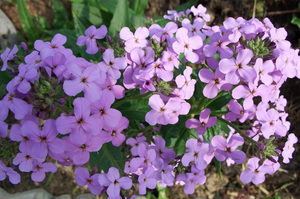 Sowing is carried out directly into open ground, starting from early April to June. The distance between the rows of the matron must be at least 10 centimeters. The seeds are dipped into the soil by half a centimeter.
Sowing is carried out directly into open ground, starting from early April to June. The distance between the rows of the matron must be at least 10 centimeters. The seeds are dipped into the soil by half a centimeter.
In greenhouse conditions, the seed can be sown in a pot, sprinkling with a layer of earth on top. The pot should be in a cool but lighted place. The sprouts will appear quickly, then they are planted in open ground.
Night violet grows best in an open, sunny place. This enhances its decorative effect. A year after planting, a dense rosette of leaves appears. A long and highly branching stem will appear only in the second year after planting.
The nocturnal seed can be added to the flower mix. This will make the lawn even more attractive. You can clearly see what the night violet looks like in the photo.
Watering
The plant requires careful but moderate watering. On hot days, watering should necessarily be frequent, but water stagnation should not appear. After watering - loosening the soil. In rainy weather, watering should be reduced. But the soil should not dry out either.
Lighting
Vechernitsa loves to grow outdoors, but it can thrive even in the shade of large trees.
Air humidity
Air humidity for violets does not matter. A slightly higher humidity will even contribute to the active growth of the plant.
Air temperature
The nocturnal flower is considered cold-resistant. Withstands temperatures up to minus 5 degrees C. Therefore, it often does not freeze even in winter. At high temperatures, the plant also feels great.
Top dressing
Vechornitsa is fed during flowering or active growth with complex mineral fertilizers.Lime is necessarily added to the soil. Granular fertilizers are scattered around the bushes and covered slightly with soil when it is loosened.
Transfer
Vechinitsa tolerates transplant perfectly. But replanting is required in pre-moistened soil. Even during the flowering period, the flower tolerates transplantation well.
Reproduction
Vectorals are propagated by seeds in late autumn or spring. The seed sprouts on day 10. After two months, the night violet begins to bloom. Before sowing, it is required to add drainage and fertilizers to the soil.
Vechernitsa seedlings must be thinned out. The terry species reproduces by dividing the bush. To extend the flowering period of night violets, the already faded inflorescences should be removed.
Diseases of the night violet
The plant can be harmed by:
- slugs;
- fleas;
- caterpillars.
Night violets in landscape design
 In the garden, a night violet flower is planted along the paths. Vechernitsa is an excellent decor for an artificial reservoir. The evening party is also irreplaceable for creating flower beds and flower beds.
In the garden, a night violet flower is planted along the paths. Vechernitsa is an excellent decor for an artificial reservoir. The evening party is also irreplaceable for creating flower beds and flower beds.
The photo shows how you can arrange the evening party in the places that are reserved for relaxation. Night violet looks great in flower arrangements.
Application
Night violet is used as a remedy in folk medicine.
Decoctions are prepared from the plant for treatment:
- gout;
- arthritis;
- rheumatism.
Vectoral infusions are used as a diaphoretic and diuretic... Helps the plant in the treatment of the respiratory tract.
Alcohol tincture from the leaves has an antibacterial effect and is indispensable for infectious diseases.
You can use nocturnal seed sprouts. They contain a lot of vitamins C and A, minerals iron, calcium, magnesium, phosphorus).
Sprouts are used to stimulate appetite and have a softening and anti-scurvy effect. Help stimulate the body's regenerative resources. Sprouts can be added to salads, snacks to spice up dishes.

